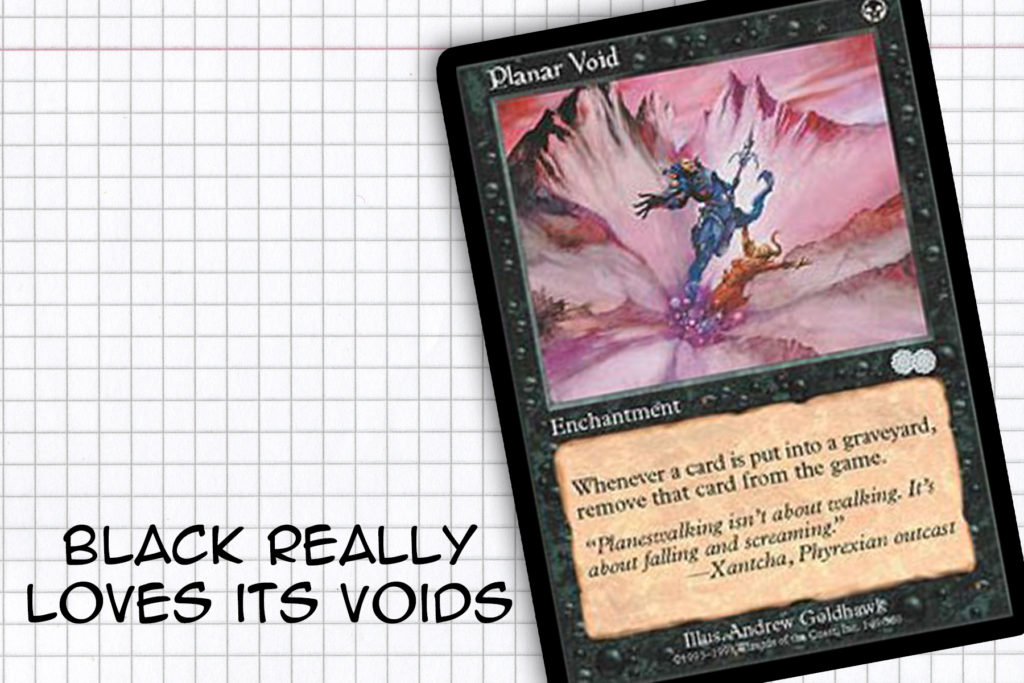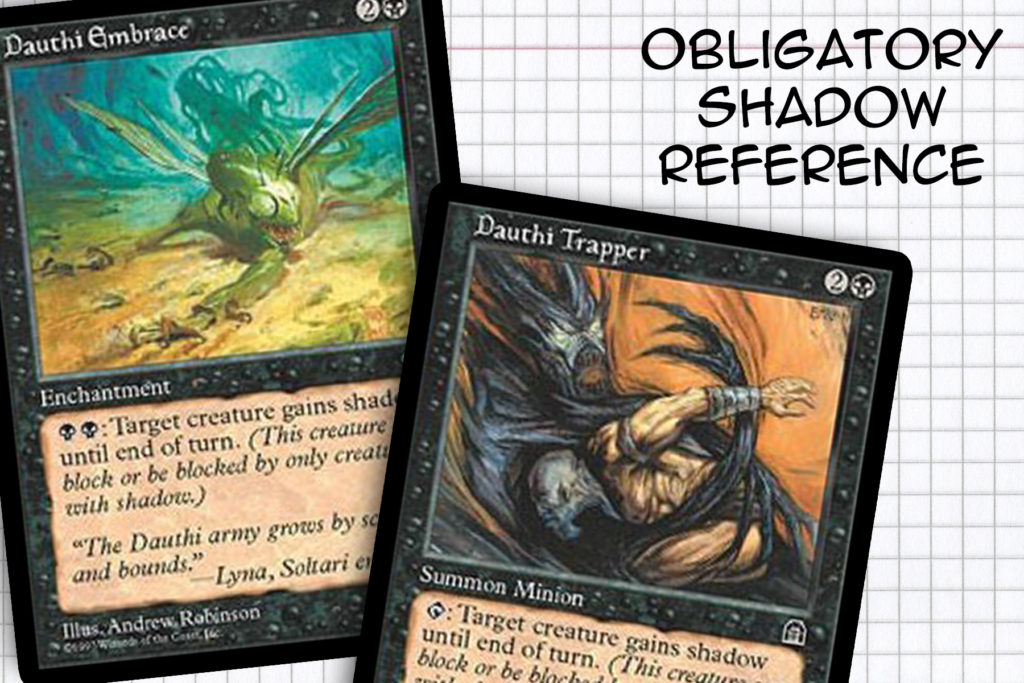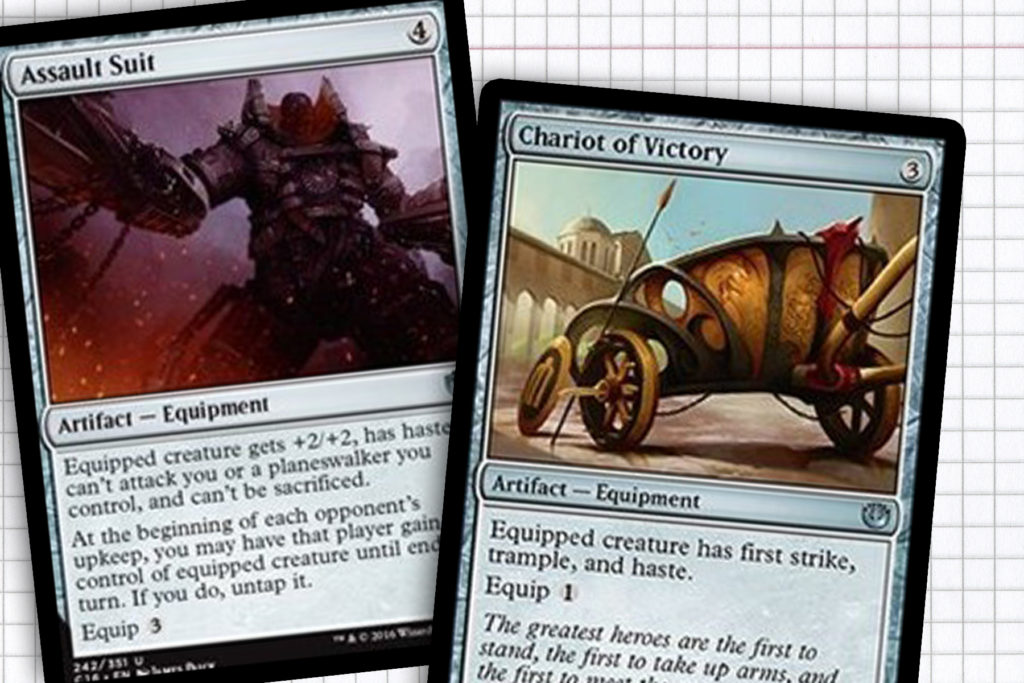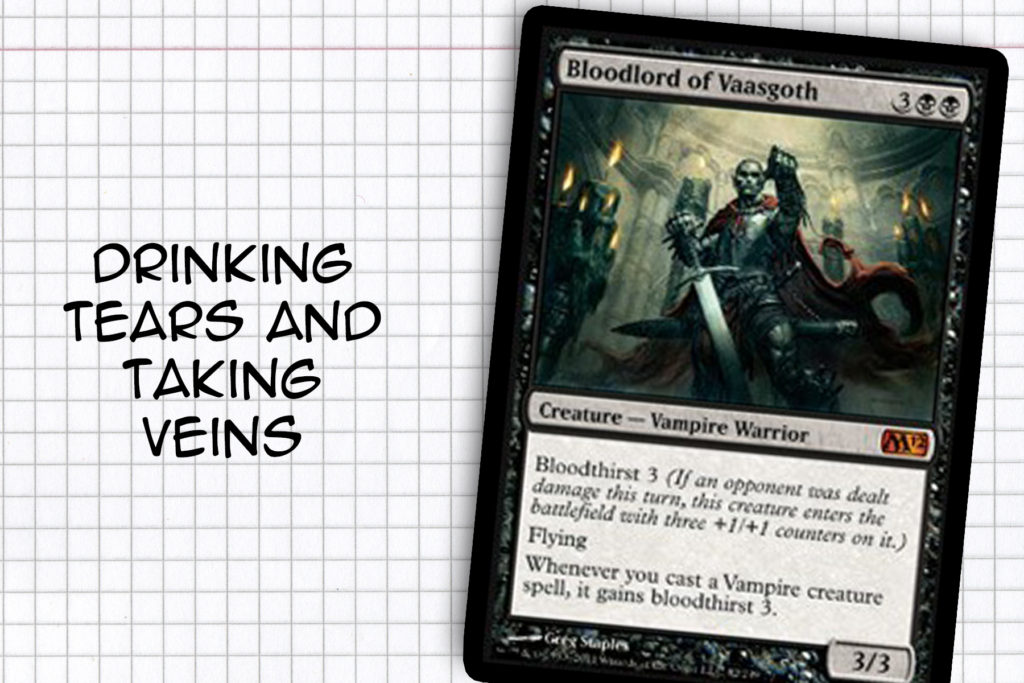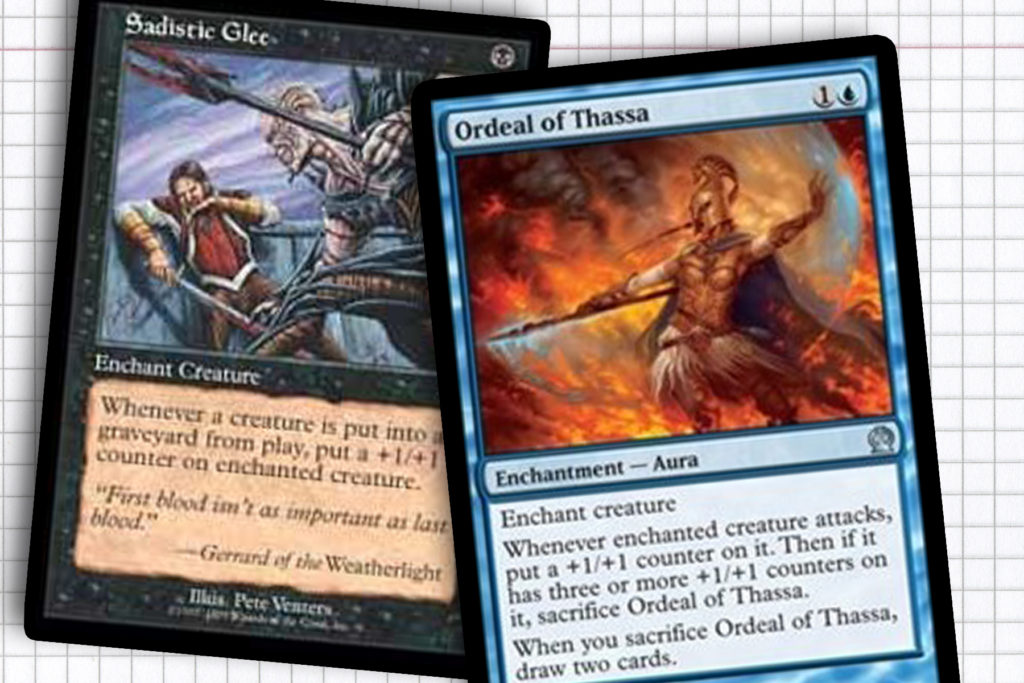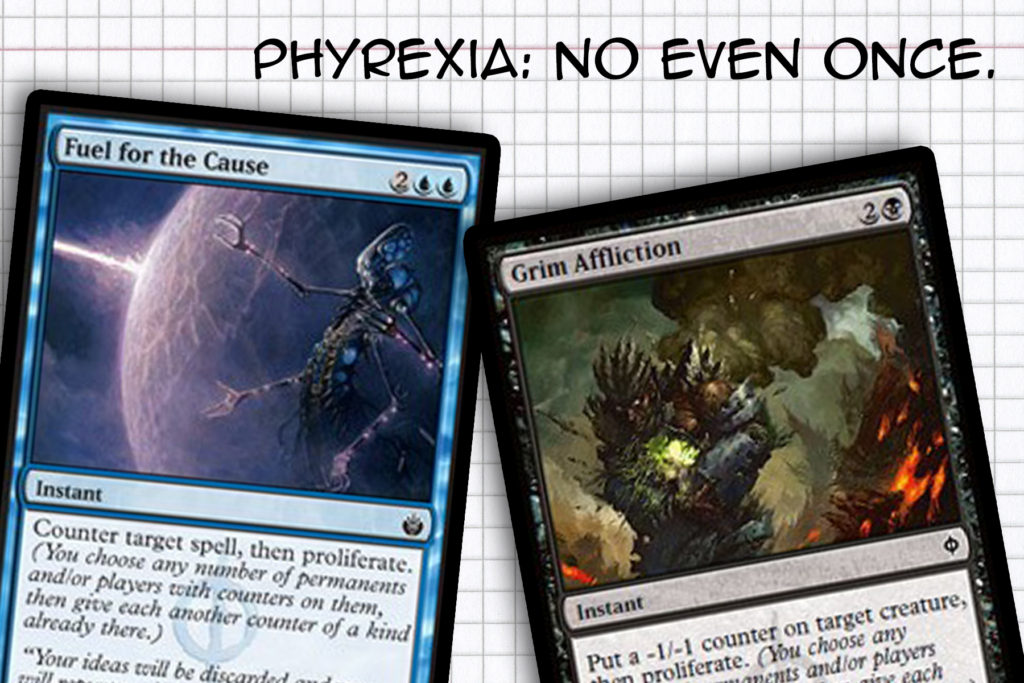This week’s commander warms my heart and brings me back to the gleeful days of discovering Ravnica and Mill as a strategy for the first time—Szadek, Lord of Secrets. These are suggested cards that you might have missed, that don’t already see much play. Let’s explore the darkness of Dimir.
Szadek, Lord of Secrets
I remember the first time I saw Szadek; it was a brisk Fall morning in 2005 and I had just rushed into the cafeteria of my high school, hoping to get in on a quick five-person game of 60-card casual before school started. My buddy, Nate, pulled out this deck in different sleeves than he usually played with, but I wouldn’t say that red flags were flying yet. It was about five minutes later, he did something along the lines of “Play Swamp. Tap Island, Island, Swamp. Dark Ritual. Dark Ritual. Cast Szadek, Lord of Secrets.” Pass the turn, take a mana burn.
I remember reading the card between turns and not grasping what I was looking at. While I had been playing Magic for about three years up to that point, I had never seen a game end because a player tried to draw a card from an empty library. This was the first time I’d seen a card to enable that.
Szadek is unquestionably unique. His strategy leverages several elements to plot a course to victory: he mills, but by attacking, but doesn’t deal damage, he get +1/+1 counters. What you get is a giant blob of a creature that, understandably, is hard to gauge if you’re new to the format or the strategy. The way I see it, Szadek is perfectly primed to be an exciting general and can use toys you’ve probably seen before to great effect. It’s only too bad we’re not going to be in Red, because I would love to take extra combat phases.
Planar Void
Since we’re going to be go heavy into Mill as our strategy, I think we’ll want to be prepared to not play into other people’s strengths and enable someone else’s flashback, dredge, reanimator, or persist strategies. Similar to the higher profile Leyline of the Void, Planar Void works to keep graveyards empty and out of reach of players by placing them in exile. This will of course mean that you have to construct your deck to not care about what ends up in you graveyard, but in my eyes systematically exiling huge chunks of your opponents’ decks exponentially is far funner than recurring Mulldrifter and Shriekmaw at will.
What I like most about this line of play is that it causes Szadek feel like Oona without sinking loads of mana into your general each turn cycle. You’ll miss out on the token aspects of the deck—which admittedly can hurt your long term prospects—but the upside is that you don’t come to the table with the same stigma attached to you right off the bat.
Dauthi Trapper + Dauthi Embrace
Clearly I am biased. I don’t know what it is, but this series has driven the amount of time I spend thinking about shadow as a mechanic off the charts. Something about getting into combat without the risk of blockers just feels right to me and both these cards deliver on that promise in spades.
For those in the audience who either are new to the series and have never seen shadow, it’s a fairly aggressive mechanic masquerading as simply evasion. Long story short, that would be a bold understatement to see it on par with flying or intimidate. But both of these cards take on control elements that can help drive through not only your attacks, but of any momentary allies you might recruit.
I favor Dauthi Embrace between the two. Even though you have to pay into each use, the fact that you can do it more than once each lap around the table allows for better tactical advantages. There is also the added bonus of it not falling prey to Wrath effects or summoning sickness, but I would include both for redundancy across the board.
Assault Suit + Chariot of Victory
As we continue to map out how our aggressive strategy can find success, we must answer how we’ll deliver the pain as quickly as possible. Both Assault Suit and Chariot of Victory have their advantages, the overlap being Haste—the most important element in my opinion. I want to make up for some of the lacking qualities of Szadek and these (surprisingly) underplayed cards are just what we need.
Assault Suit has a special place in a few people’s hearts, I imagine. When it first got printed, it was very closely tied to another card fresh off the printers, Zurgo Helmsmasher. I think the link to that card stunted its popularity a little bit and it never got the attention it deserved outside of that deck. In this deck, it will play a pivotal role in not only buffing up our general, but also placing the option of milling out opponents in other players hands without your neck being on the line. Unlike Zurgo, no one will be required to attack anyone else and make our job easier, but I bet there is at least one Chaotic Neutral person in every playgroup.
Chariot of Victory is symbolic of all those cards you include in your decks already to give haste when you need it. With the added benefit of first strike and trample, you’re all but guaranteeing that Szadek will be connecting without dying in combat. Both of these are the kind of cards I am a little surprised doesn’t see a bit more play, especially as budget options. I would strongly recommend opening your eyes to the power they hold.
While we’re on the topic of equipment; before moving down the list, I think one of the elements our skelton will need most is access to double strike—a cure for not being in red and the absence of multiple combat steps. This ability doesn’t get printed on equipment much at all. In fact, short of Inquisitor’s Flail (which I don’t advise playing), Fireshrieker, and Grappling Hook are all you get as access to this off-color ability. As a word to the wise, don’t sleep on these effects.
Bloodlord of Vaasgoth
Somehow I have managed to get through to the back half of the article without pointing out the low-hanging fruits, one of which is the Vampire tribal tools. Now, I’m not saying this should be a Vampire deck straight out, just that every early bit of pump for Szadek leads to massive upsides as you’re turning your attention to the third or fourth conquest late in the game. I picked Bloodlord of Vaasgoth because it allows for a unique pump effect that we can interact with using tools I will talk about next. 8-16-32 is a much better sequence to be cutting off the top of libraries when compared to 5-10-20. On top of that, starting your seven-drop general at eight power makes him more durable and gets him out of Blasphemous Act range after only one hit, setting us up for our next pair of cards.
Sadistic Glee + Ordeal of Thassa
Since we’re already in the mind space of +1/+1 counters, Sadistic Glee and Ordeal of Thassa both work as back-up to our previous card without locking you into Vampire synergies. We’re in black, we’re probably going to fill the other parts of our deck with ways to kill things. We’re also strongly motivated by our general to attack, which will reward us with some card draw within the first two turns this on the board. You will be, of course, get wrecked by a stray Path to Exile.
Without being too far into a Voltron strategy, I look at both of these cards and see the potential for advantages at a minimal cost whether you’re improving your general or a bystander on your board. It seems obvious that Sadistic Glee should garner you more counters over the course of a game if you play your cards right, but sometimes a permanent boosts and two more cards will be more important to you.
Fuel the Cause + Grim Affliction
Proliferation was the second of the low-hanging fruits I mentioned earlier and the last of grouping of cards on display. Coupled with the last few cards on our list, this mechanic can offer some midrange and control elements we’re likely going to need to survive into the seven-mana range. For those out of the loop, these two picks are pretty symbolic of how the mechanic gets used; an effect with the added bonus of adding counters of some kind to the entire board. Proliferate does require some extra setup, as you’ll want to fire these spells after you’ve made at least one successful attack. From there, you can slowly start to make great strides with the amount of “mental” damage you’re doing each turn.
I would advise first finding a slot for Grim Affliction, as I believe it has the better chance of generating value for you. But Fuel the Cause, even as a reactive spell, could easily find a home. I had not yet considered it, but maybe we’ll want to include Grindclock and Everflowing Chalice.
That’s my time for the day, I really hope I was able to open people’s eyes to cards they may have never seen before. I want to open the flood gates in a format I hear more and more is “solved” or too staple-heavy. And, seeing as we are now a solid month into series and I’ve run through the crop of my originally pitched ideas, I want to turn the mic over to the audience; anyone who wishes to be vocal and give their own two cents. What would you like to see out of this series? What generals would you like to see get the Shattered Perspective treatment? You can find me on Twitter via @RyanSainio or yelling at Hipsters directly through the e-mail system at the bottom of the page.
Feedback is the life-blood of content creation, so until next time, may you find few new routes to victory and thanks for your time.


